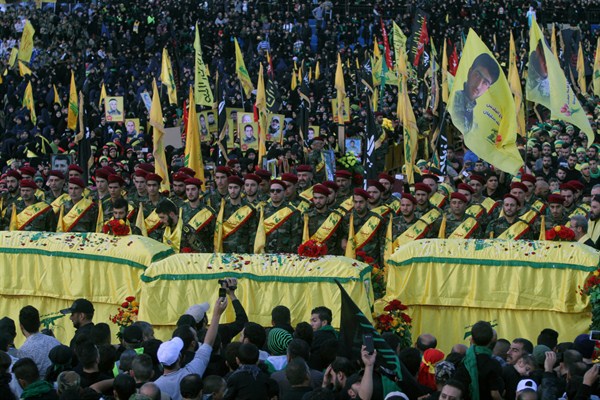As Hezbollah prepares to mark the 10th anniversary of a month-long war with the Israel Defense Forces (IDF), the militant, Iran-backed Shiite organization is facing some of the toughest challenges in its three decades of existence.
Hezbollah is mired in a protracted war in neighboring Syria, where its fighters are battling to defend the regime of Syrian President Bashar al-Assad. The conflict is estimated to have taken the lives of more Hezbollah fighters in four years than in the entire period of resisting Israel’s occupation of south Lebanon between 1982 and 2000. Hezbollah is struggling to maintain morale among its Shiite support base as war fatigue grows. Formerly hailed as the champion of anti-Israel resistance across the Islamic world, today Hezbollah is vilified by Sunni Muslims for its support of the Assad regime. Once respected for its financial probity, Hezbollah in recent years has seen the cancer of corruption take root within its ranks as the organization has grown in size and power. Lately, it has faced a financial crunch, the result of financing its Syria intervention; a reduction in funds from Iran due to the downturn in oil prices; and measures taken by the United States to locate and sever its global revenue streams, and threaten sanctions against commercial entities dealing with the organization.
On the other hand, in the past decade, Hezbollah has swelled enormously in terms of manpower and weaponry. It has the capability in the next war to bring normal life to a halt in Israel. It possesses guided rockets that can strike specific targets as far south of Lebanon as Tel Aviv; its anti-ship missiles have sufficient range to effectively blockade Israel’s coastline; and its suspected air-defense assets will complicate Israel’s traditionally unhampered domination of the air space. Hezbollah’s cadres have amassed new war-fighting skills in Syria and, most importantly, have gained critical combat experience in a brutal theater. IDF officials acknowledge that Hezbollah constitutes the Jewish state’s most formidable threat, illustrating that the military power of this nonstate actor is comparable to that of a state.

